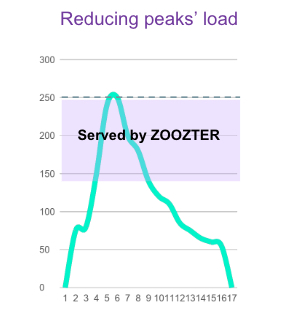Reduce Demand Charges with Peak Shaving
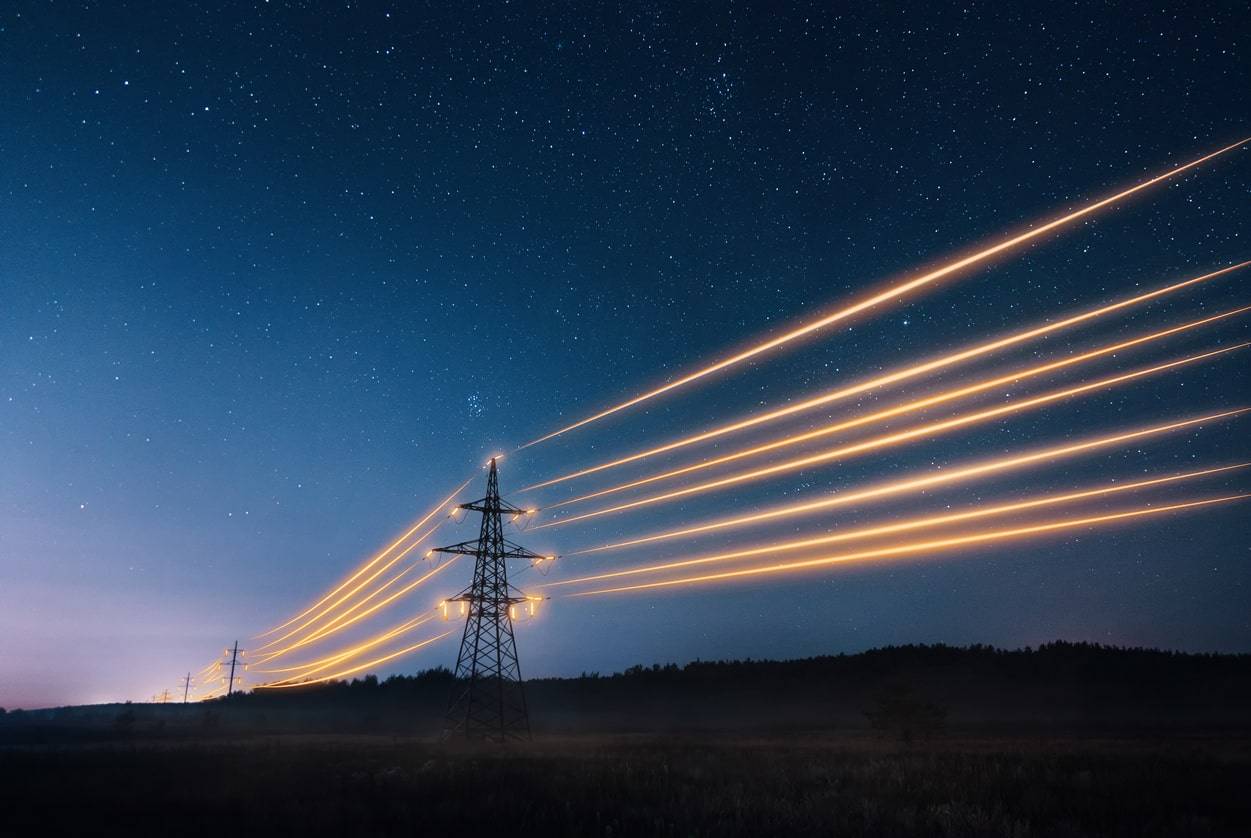
In a previous blog, we explored the dreaded demand charges for businesses. These charges reflect the rate at which a business – such as an EV charging station – demands power, as calculated by the highest average electricity usage above a specified demand limit within a defined time interval (usually 15 minutes) during a billing period.
EV charging stations will always have high peaks because there are times of day when more people will want to charge their cars and other times when the stations will be idle. Because of this, energy costs for ultra-fast charging stations can increase by 30-70%.
There is, however, a solution that can help ultra-fast EV charger operators save on costs. That solution is with a flywheel Power Booster (FESS) which can be used for “peak shaving,” or reducing the peak demand levels to decrease the associated demand charges.
How to Reduce Peak Demand with a Power Booster?
The demand charge is based on the highest peak demand in a given time window (e.g. 15 minutes). That means the only way to reduce demand charges is to “shave off” some of that peak, making it lower. With a Power Booster in place, energy can be stored for later release. When that stored energy is used, the charging station can draw less power from the grid, which is not counted in the demand charge calculations.
Take the following example of a charging station’s electricity demand: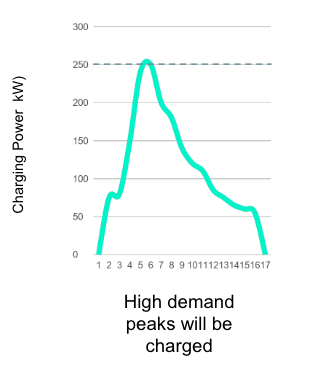
The above image shows the rate of power demanded without a Power Booster. In this example, the highest peak (highest utilization) is 250kW. The utility company sets a consumption limit, which, for this example’s sake, we will say is 80kW, and the demand charge is $20 per KW.
The peak demand is 170kW over the limit (250-80), which means the demand charge will be $3,400 for the month (170*$20).
Now, let’s say a Power Booster such as the ZOOZTER-100TM power booster is installed. In the image on the left, the Power Booster stores 100kW that can be used during peak times instead of drawing from the power grid.
- Utility company’s consumption limit is 80kW.
- Highest utilization peak is 250kW with no Power Booster in place.
- Demand charge is $20 per KW
- Total demand costs: (250-80)*20 = $3,400.
In this case, The consumption limit is still 80kW and the total utilization is still 250kW. The overage remains 170kW, but 100kW of that has come from the Power Booster and not from the grid. So, as far as the electric company is concerned, the usage is only 70kW above the consumption limit (250-100-80) and the demand charge is, therefore, $1,400 for the month (70*$20).
With some analysis and advanced planning, charge-point operators can understand when peak demand occurs and make sure they use the Power Booster
at that point. With this type of strategy in place, demand charges will be reduced, while drivers will still be able to charge their cars at fast speeds.
The Added Benefit of EMS
There is a way to lower demand charges further and even eliminate them completely. Companies that combine an Energy Management System (EMS) with their Power Booster can reap these benefits. The EMS enables the charge point operator to set a consumption limit that will prevent them from drawing power from the grid once they reach that limit.
Let’s return to our charging station example from above:
- Utility company’s consumption limit is 80kW.
- Highest utilization peak is 250kW with no Power Booster in place.
- Demand charge is $20 per KW
- Total demand costs: (250-80)*20 = $3,400.
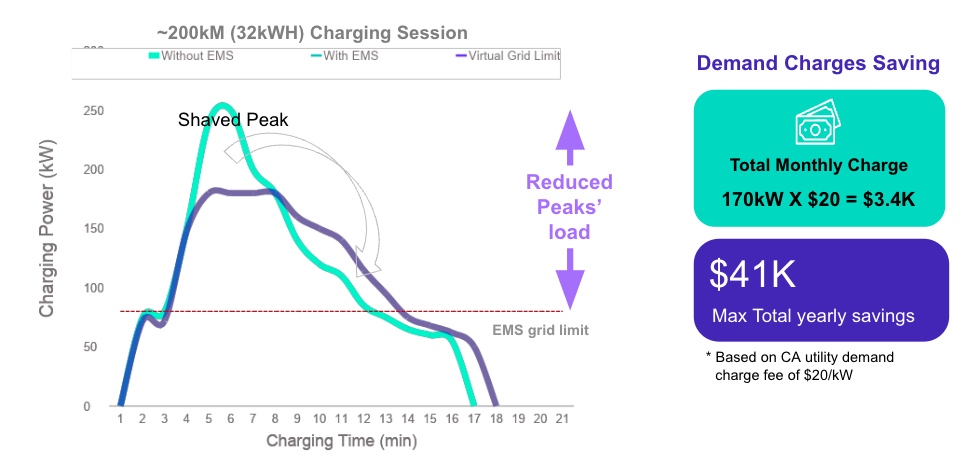
Now, let’s say there is a Power Booster installed that can store 100kW, which then brings the highest peak down to
150kW or 70kW over the consumption limit. The demand charge is lower, but it can be completely neutralized with EMS:
Using EMS, the consumption limit of 80kW can be set, ensuring that no power will be drawn from the grid over 80kW (in line with the utility company’s limit). Because of the 100kW stored in the Power Booster, the charging station can supply 180kW during peak times – 100kW of the stored energy and 80kW from the grid. Because they are not exceeding the 80kW limit of power from the grid, there are no demand charges. This is a cost savings of over $40,000 annually.
It is important to note that the one downside to this scenario is that the charging speed will be lower because the energy is pulled from the grid slower over a longer period of time. This needs to be accounted for as part of the energy management process.
The Power Booster and EMS in Action: Case Studies
So what does this look like in practice? The image below shows the energy usage of a convenience store in the USA over a one-year period. Their average usage is 20kW, but the highest peaks are over 300kW. With a consumption limit of 100kW and demand rates between $24 – $31 depending on the season, they were looking at significant costs.
Using their EMS, the convenience store can cap its grid consumption at 100kW and supply the remaining 200+kW at peak times from the ZOOZTER™-100. This can prevent the company from incurring demand charges and save them $39,400 over the year.
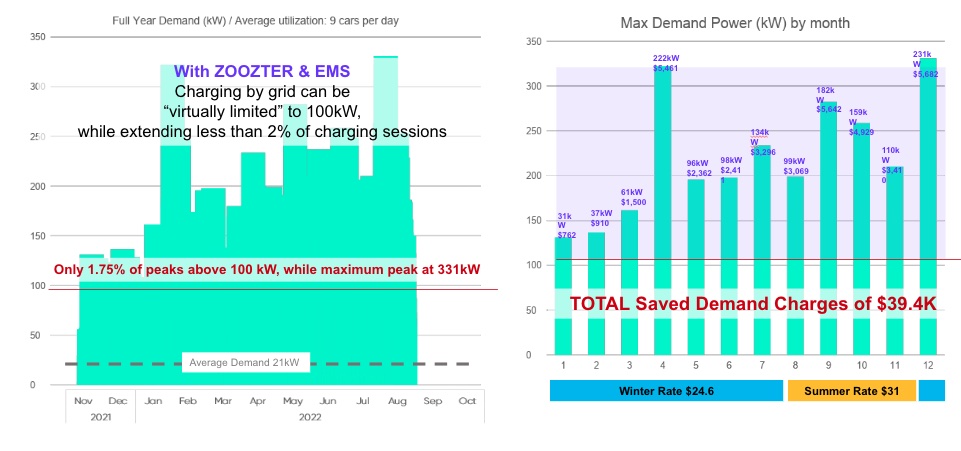
Low Utilization and High Peaks: A Bad Combination
Now consider a case where you have a charging station with high peaks caused by just a few charging sessions per month. Without a solution in place, the profit on those charging sessions will be negative:
For example, let’s say there are 5 charging sessions per day, the profit per kWh is $0.50, and the typical charging session is 25kWh. That means 3,750 kWh are sold in 30 days for a total profit of $1,875. If there is a demand charge of $3000, the profit (or loss, in this case) is -$1,125.
Say No to Demand Charges
Chargepoint operators have the power (pun intended!) to take control of their expenses. By investing in the combination of a Power Booster and EMS, they can save $40,000 in operational costs annually. This can significantly impact the bottom line and the station’s ability to turn a profit, even in situations with low utilization and high peaks.
For more information on how ZOOZ can help reduce your demand charges, contact us.

